India's Pragyan lunar rover has taken its first picture of its 'mother ship', the Vikram lander, as the two continue their groundbreaking expedition during the Chandrayaan-3 mission.
The Indian Space Research Organisation (ISRO) released two black-and-white images of Vikram on Wednesday, August 30, showing the Chandrayaan-3 mission's lander standing on the dust-covered lunar surface.
"Smile! This morning Pragyan Rover captured an image of Vikram Lander," ISRO said in a post sharing the images on X (formerly Twitter). "This historic image was captured by the Rover's onboard Navigation Camera (NavCam)."
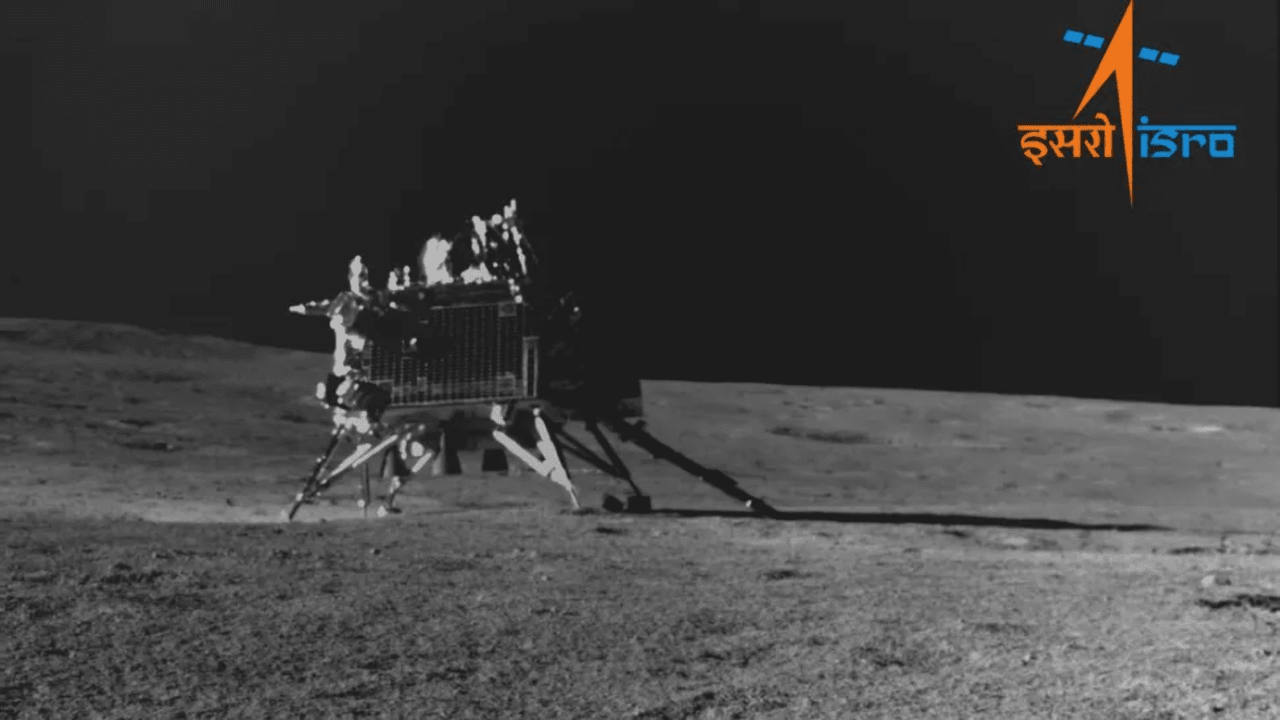
The first image of Chandrayaan 3 mission's Vikram lunar lander on the lunar surface was captured by the mission's Pragyan rover. Source: ISRO
ISRO said the image was captured on Wednesday (August 30) at 7:35 a.m. Indian Standard Time. One of the annotated images shows Vikram's two science sensors deployed on the lunar surface - the Chandra Surface Thermophysics Experiment (ChaSTE) and the Interstellar Seismic Activity Instrument (ILSA).
Chandrayaan-3 mission reaches halfway mark
The Chandrayaan-3 mission landed on the Moon on Wednesday, August 23. One Earth day later, the Pragyan rover moved down from the lander and the two began their historic scientific journey .
A week (in Earth time) since landing, the mission has sent home a series of images and videos of Pragyan walking on the lunar surface, leaving traces on the lunar soil.
That is why the image released by ISRO on August 30 is the first image showing the Vikram lander through the "eyes" of the Pragyan rover.
The mission's ChaSTE sensor made headlines earlier this week when it took temperature measurements on the lunar surface - the first measurements taken near the south pole from a sensor placed directly on the surface rather than from lunar orbit. The instrument has a probe that drills 10cm into the soft lunar soil to understand how soil temperature changes with depth.
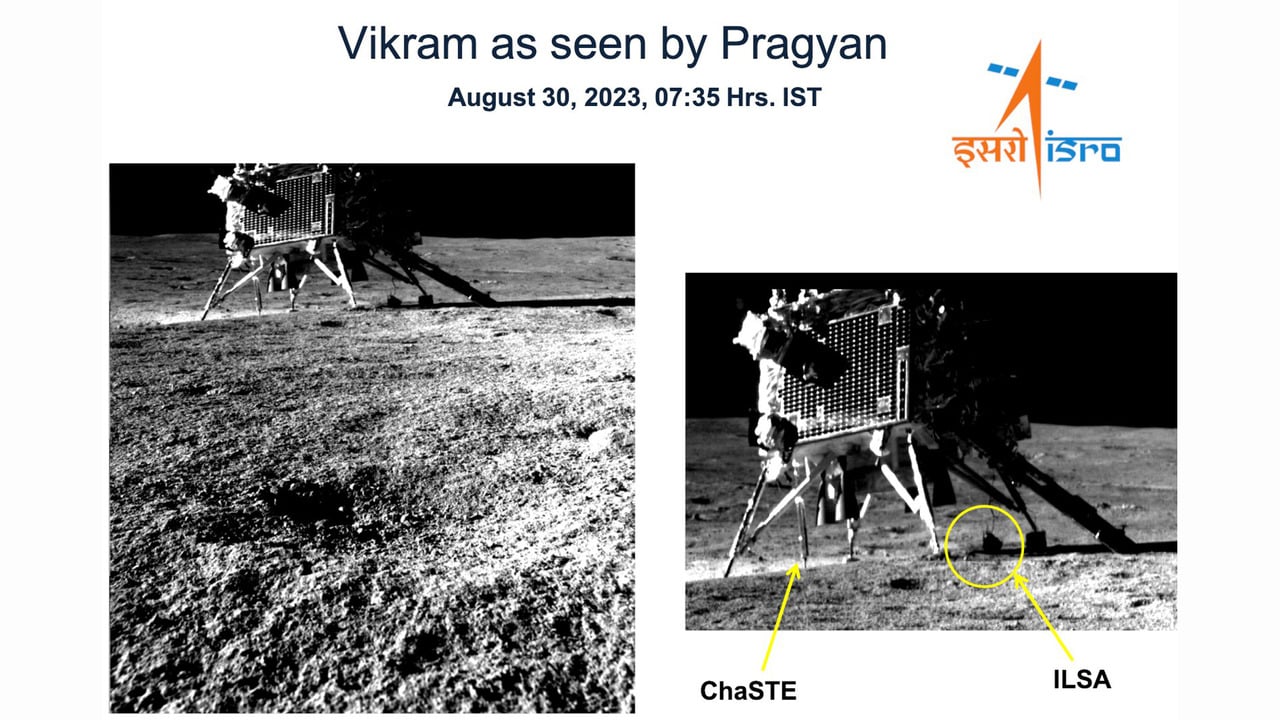
ISRO's analytical image of the Vikram rover with its scientific sensors. Source: ISRO
Measurements show a wildly different temperature gradient at the surface: Just 8 cm below the surface, the soil is freezing at minus 10 degrees Celsius, while the Moon's surface is a balmy 60 degrees Celsius due to the sun.
According to scientists, the surface of the Moon can become extremely hot during the two full moon weeks because the object, unlike Earth, is not protected by a thick atmosphere capable of absorbing the Sun's heat.
Previous measurements from spacecraft orbiting the Moon show that, especially around the Moon's equator, temperatures can reach a terrifying 127 degrees Celsius (260 degrees Fahrenheit) during the day and plummet to minus 173 degrees Celsius (minus 273 degrees Fahrenheit) at night, according to NASA.
For this reason, crewed missions to the Moon must take place at lunar dawn when the Moon is warm enough for humans to work before it gets too hot.
In a separate announcement, ISRO said the Chandrayaan-3 mission found traces of sulfur in lunar soil. Sulfur had previously been found in small amounts in samples brought to Earth by Apollo missions in the 1970s, but scientists were unsure how common the mineral was on the moon.
Scientists believe that the sulfur on the Moon comes from past tectonic activity, and so learning more about its abundance could help them better understand the Moon's past.
The Vikram and Pragyan spacecraft will conduct experiments for a total of 14 Earth days (1 lunar day). Chandrayaan-3 is now halfway through its planned journey as neither the probe nor the lander could survive the cold, sunless lunar night.
The batteries of both solar-powered craft were not powerful enough to keep the system running as temperatures plummeted and darkness enveloped the lunar surface.
The Chandrayaan-3 mission was India's first successful attempt to land on the Moon and the world's first successful landing on the south polar region. Previously, only the United States, the former Soviet Union and China had placed their spacecraft on the lunar surface in a controlled landing.
In early 2023, a Japanese lander called Hakuto-R crashed when it hit the rim of an impact crater during its landing. Russia's Luna-25 mission met a similar fate just three days before Chandrayaan-3's success.
India itself previously attempted a Moon landing with the Chandrayaan-2 mission in 2019; although the Chandrayaan-2 lander crashed due to a software glitch, its orbiter still studied the Moon from above.
The south polar region that Chandrayaan-3 studied is of great scientific interest because its impact craters are believed to contain significant amounts of water ice.
Scientists believe this water could be extracted and used to provide drinking water and oxygen for future crews, helping to reduce the cost of such missions.
Source: Space
Source







![[Photo] Binh Trieu 1 Bridge has been completed, raised by 1.1m, and will open to traffic at the end of November.](https://vphoto.vietnam.vn/thumb/1200x675/vietnam/resource/IMAGE/2025/10/2/a6549e2a3b5848a1ba76a1ded6141fae)
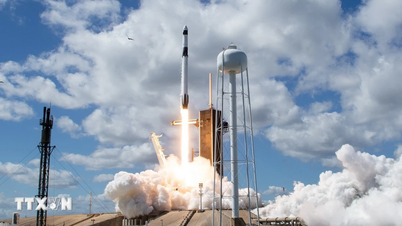

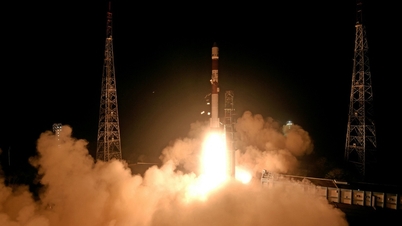

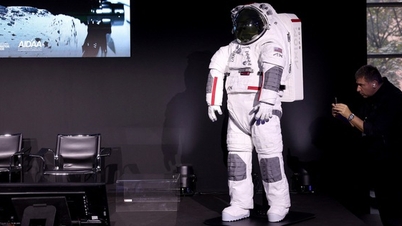
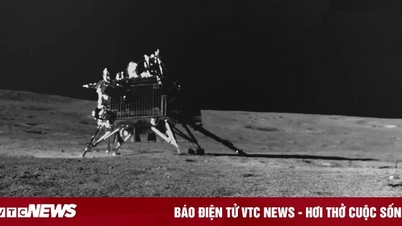

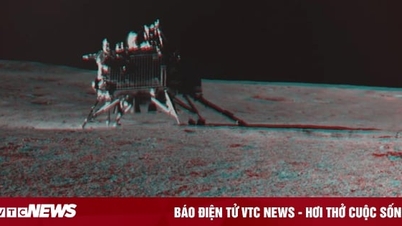






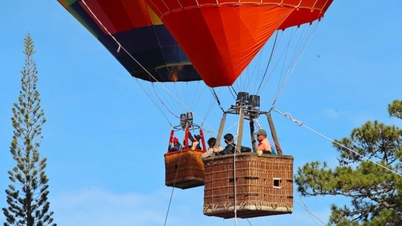













































































Comment (0)